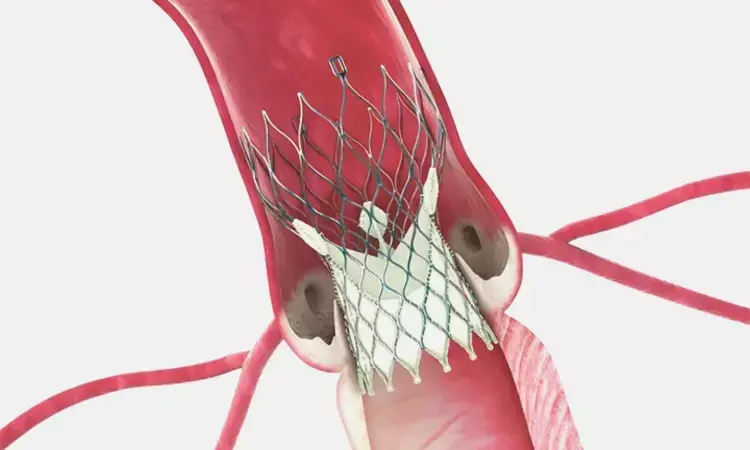- Home
- Medical news & Guidelines
- Anesthesiology
- Cardiology and CTVS
- Critical Care
- Dentistry
- Dermatology
- Diabetes and Endocrinology
- ENT
- Gastroenterology
- Medicine
- Nephrology
- Neurology
- Obstretics-Gynaecology
- Oncology
- Ophthalmology
- Orthopaedics
- Pediatrics-Neonatology
- Psychiatry
- Pulmonology
- Radiology
- Surgery
- Urology
- Laboratory Medicine
- Diet
- Nursing
- Paramedical
- Physiotherapy
- Health news
- Fact Check
- Bone Health Fact Check
- Brain Health Fact Check
- Cancer Related Fact Check
- Child Care Fact Check
- Dental and oral health fact check
- Diabetes and metabolic health fact check
- Diet and Nutrition Fact Check
- Eye and ENT Care Fact Check
- Fitness fact check
- Gut health fact check
- Heart health fact check
- Kidney health fact check
- Medical education fact check
- Men's health fact check
- Respiratory fact check
- Skin and hair care fact check
- Vaccine and Immunization fact check
- Women's health fact check
- AYUSH
- State News
- Andaman and Nicobar Islands
- Andhra Pradesh
- Arunachal Pradesh
- Assam
- Bihar
- Chandigarh
- Chattisgarh
- Dadra and Nagar Haveli
- Daman and Diu
- Delhi
- Goa
- Gujarat
- Haryana
- Himachal Pradesh
- Jammu & Kashmir
- Jharkhand
- Karnataka
- Kerala
- Ladakh
- Lakshadweep
- Madhya Pradesh
- Maharashtra
- Manipur
- Meghalaya
- Mizoram
- Nagaland
- Odisha
- Puducherry
- Punjab
- Rajasthan
- Sikkim
- Tamil Nadu
- Telangana
- Tripura
- Uttar Pradesh
- Uttrakhand
- West Bengal
- Medical Education
- Industry
Pre-procedural serum albumin predicts length of hospital stay and death among TAVR patients

A 50% death rate for severe AS at two years after diagnosis exists in the absence of treatment. For many years, surgical aortic valve replacement was the only interventional treatment for severe AS (SAVR). Although SAVR has been linked to an intraoperative mortality rate as high as 10% for patients with advanced age, left ventricular failure, and chronic renal illness, it also necessitates sternotomy and cardiac bypass.
As a result, surgery was historically not provided to approximately one third of individuals with severe AS. Percutaneous transcatheter aortic valve replacement (TAVR) has been created and improved during the last 20 years in an effort to lower peri-procedural morbidity and mortality in high-risk patients. According to recently released data, individuals with pre-procedural albumin values below 3.5 g/dL are more likely to have negative outcomes after TAVR than patients with albumin concentrations over 3.5 g/dL.
Data from TAVR patients at the author's facility between January 2013 and December 2017 were retrospectively evaluated. One to four weeks before to the surgery, the baseline albumin concentration for each patient was measured. We conducted regression analyses, adjusting for Society of Thoracic Surgeons classification, New York Heart Association classification, and Kansas City Cardiomyopathy Questionnaire 12 scores, to look at the relationship between albumin concentration and outcomes.
In the analysis, 338 patients were accounted for. According to Cox-proportional hazards regression, patients with albumin concentrations below 3.5 g/dL were 80% more likely to have an extended length of stay in the ICU. in comparison to patients with albumin concentrations >3.5 g/dL (HR 1.79; 95%CI 1.04-2.57, P = 0.03) and 70% more likely to have a protracted hospital stay (HR 1.68; 95%CI 1.01-2.46, P = 0.04). When compared to patients with albumin concentrations >3.5 g/dL, logistic regression revealed that patients with albumin concentrations 3.5 g/dL were four times more likely to not live to 90 days (OR 3.94; 1.13-12.63, P = 0.03) following their TAVR.
In this single-center, retrospective study, we demonstrate that, compared to patients with normal albumin concentrations (3.5 g/dL), TAVR patients with low pre-procedural albumin concentrations (3.5 g/dL) have a higher risk of prolonged ICU and hospital LOS, a fivefold risk of non-home discharge, and a fourfold risk of 90-day mortality. Although our study's findings are observational in nature, it is impossible to dispute their biological validity. Patients with chronic diseases may have low albumin concentrations as a biomarker for cachexia. Patients with severe cardiovascular illness are susceptible to the syndrome known as cardiac cachexia, which is more common in those with heart failure. It has been proposed that anorexia as well as an imbalance between anabolic and catabolic pathways, up-regulation of the renin-angiotensin axis, neurohormonal abnormalities, and inflammation play a significant part in its etiology. As a result, pre-procedural albumin concentrations may aid to identify prospective TAVR candidates who may benefit from stronger preventative efforts and are at elevated risk for malnutrition and/or cachexia. According to the current data, patients with low pre-procedural albumin concentrations may have longer hospital and ICU stays, be more likely to be discharged away from home, and have a greater probability of dying within 90 days following TAVR than patients with normal pre-procedural albumin concentrations. To ascertain if risk categorization based on pre-procedural albumin concentration will enhance outcomes in potential TAVR patients, prospective trials are required.
Reference –
Beydoun NY, Tsytsikova L, Han H, Furzan A, Weintraub A, Cobey F, Quraishi SA. Pre-procedural serum albumin concentration is associated with length of stay, discharge destination, and 90-day mortality in patients after transcatheter aortic valve replacement. Ann Card Anaesth 2023;26:72-7
MBBS, MD (Anaesthesiology), FNB (Cardiac Anaesthesiology)
Dr Monish Raut is a practicing Cardiac Anesthesiologist. He completed his MBBS at Government Medical College, Nagpur, and pursued his MD in Anesthesiology at BJ Medical College, Pune. Further specializing in Cardiac Anesthesiology, Dr Raut earned his FNB in Cardiac Anesthesiology from Sir Ganga Ram Hospital, Delhi.
Dr Kamal Kant Kohli-MBBS, DTCD- a chest specialist with more than 30 years of practice and a flair for writing clinical articles, Dr Kamal Kant Kohli joined Medical Dialogues as a Chief Editor of Medical News. Besides writing articles, as an editor, he proofreads and verifies all the medical content published on Medical Dialogues including those coming from journals, studies,medical conferences,guidelines etc. Email: drkohli@medicaldialogues.in. Contact no. 011-43720751


